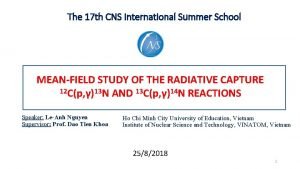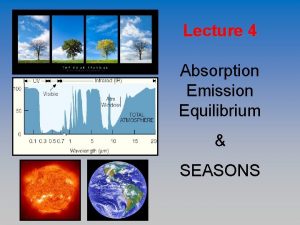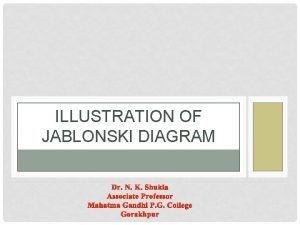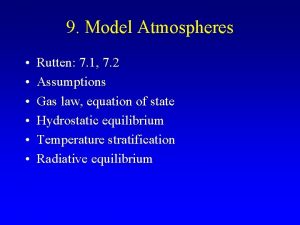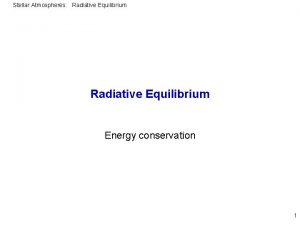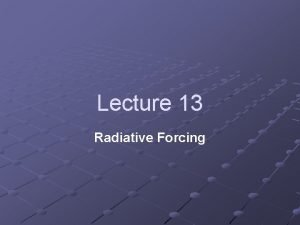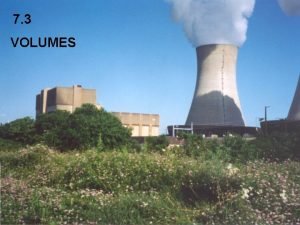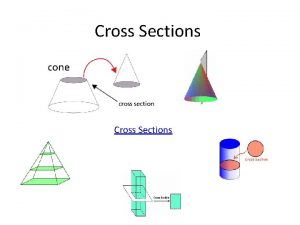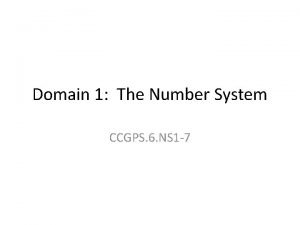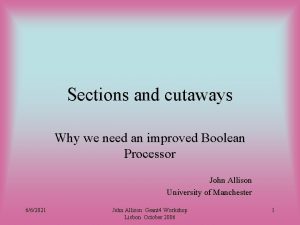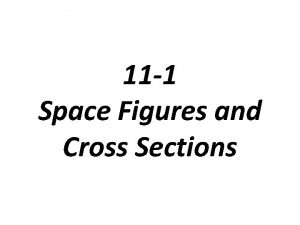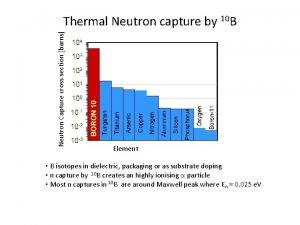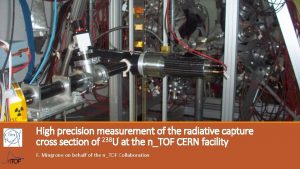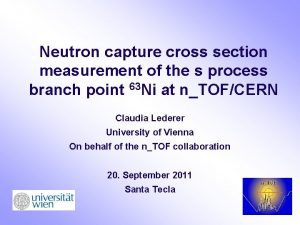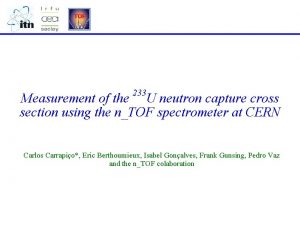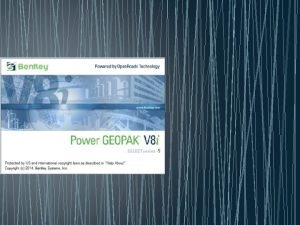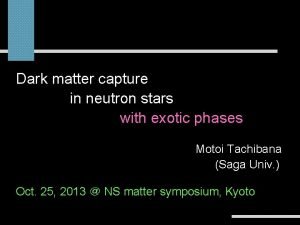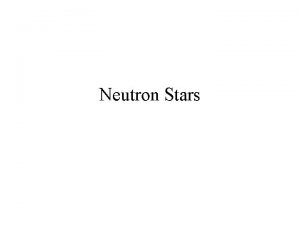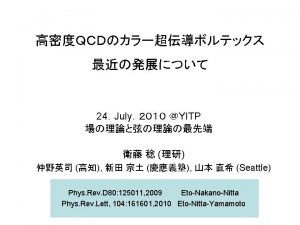Radiative neutron capture cross sections measurement of 70
















- Slides: 16

Radiative neutron capture cross sections measurement of 70 Ge – almost final results A. Gawlik 1, C. Lederer – Woods 2, J. Perkowski 1, Stanislav Valenta 3 B. and the n_TOF collaboration C. D. E. 1 University 2 3 of Lodz University of Edinburgh Charles University in Prague n_TOF meeting – 27 -28. 11. 2018, Granada, Spain

Individual analysis of each C 6 D 6 detector o detector calibration o weighting function o normalization to Au Neutron flight path determination Brief reminder – status Checks gamma loss below the thresh. and due to electron conversion, (2. 5%) Checks parasitic/dedicated pulses – both intensities were used Analysis of the background contribution Final capture yield estimation RRR: Resonance analysis - Resonance parameters up to 25 ke. V Statistical analysis of the resonance parameters URR: Averaged cross section calculations (MACS for 5 -100 k. BT) Final uncertainty estimation

§ experiment took place in 2015, during Spring campaign, using four Bicron C 6 D 6 § Ge. O 2: 97. 71% 70 Ge enrichment, known geometry (cylindrical pallet 2 cm Ø x 3 mm) § first data since 1968 (Maletski et al. ) – resonance parameters Brief reminder § first data since 1985 (Walter & Beer) – MACS calculations (3. 5 – 240 ke. V) now from thermal to 300 ke. V § over 100 new resonances § RRR up to 25 ke. V § URR up to 300 ke. V

Analysis of the background – different proton intensities 1, 6832*1018 protons in total

capture yield energy (e. V) capture yield Resonance analysis: n_TOF vs Evaluations 122 resonances were found and parameterized capture yield 20 exist in the data bases 73 resonances in the RRR, including 61 new resonances, described for the first time energy (e. V)

capture yield full energy range and examples of the resolved resonances in the capture yield of 70 Ge plus the SAMMY fit RRR: Resonance analysis capture yield energy (e. V)

capture yield examples of the resolved resonances in the capture yield of 70 Ge and the SAMMY fit RRR: Resonance analysis energy (e. V) capture yield energy (e. V)

resonance number RRR: Resonance analysis energy (e. V) capture yield energy (e. V)

capture yield examples of the resolved resonances in the capture yield of 70 Ge and the SAMMY fit comparing to the data base ENDF/B-VII RRR: Resonance analysis energy (e. V)

~1% contribution from 72 Ge URR: Averaged cross section calculations URR cross section has been corrected for MS and self shielding (~4%) energy (ke. V)

G. Walter and H. Beer, Measurement of neutron capture cross sections of s - only isotopes – 70 Ge, 86 Sr and 87 Sr, Astron. Astrophys. 142, 268 (1985). THIS WO RK – prelimin ary MACS URR: Averaged cross section calculations

Experiment 70 Ge(n, �� ) were performed three years ago and for the first time since 1968. Detailed analysis allowed to obtain final yield in the RRR with 5% uncertainty. Summary Resonances fits of n_TOF data compared to ENDF/B-VII are in a general good agreement, some resonances shifted to the lower energies 122 resonances were parameterized from 1 ke. V up to 44 ke. V (before for En<10 ke. V). 73 resonances in the RRR. MACS calculated for energies from 5 to 100 ke. V, are in a very good agreement with previous measurement (Karlsruhe, 1985).

Statistical analysis of the resonance parameters: RRR: Resonance analysis capture yield - determination of the spin configurations Know n spi 5/8% n diffe renc es b valu etween es ke rnel energy (e. V)

Statistical analysis of the resonance parameters: - determination of the spin configurations own 14/1 capture yield RRR: Resonance analysis Unkn energy (e. V) 8% d spin iffer ence s valu betwee es n ke r nel

Statistical analysis of the resonance parameters: capture yield - determination of the spin configurations - resonances where spin determination is not possible from the fit. . but it might be investigate by the statistical models RRR: Resonance analysis Energy (ke. V) Kernel, J=1/2 Kernel, J=3/2 6. 80 231± 4 285± 5 9. 95 243± 8 284± 12 10. 37 243± 8 284± 12 11. 83 232± 7 277± 9 12. 40 251± 7 253± 9 15. 71 224± 9 240± 11 16. 37 218± 12 226± 15 17. 36 225± 12 241± 10 19. 65 238± 12 269± 14 21. 69 252± 11 262± 13 22. 28 254± 12 280± 14 Unkn own energy (e. V) spin

Statistical analysis of the resonance parameters: - determination of the average �� �� - resonances where �� is higher (~500 me. V) than the other resonances/ �� evaluations (~160 me. V) RRR: Resonance analysis capture yield - doublets? or problems with the RF? energy (e. V)
 Fhbdf
Fhbdf Radiative equilibrium temperature
Radiative equilibrium temperature Jablonski diagram definition
Jablonski diagram definition Radiative equilibrium temperature
Radiative equilibrium temperature Radiative equilibrium temperature
Radiative equilibrium temperature Radiative forcing definition
Radiative forcing definition Cross slice
Cross slice Solids with known cross sections
Solids with known cross sections Cross section volume
Cross section volume Triangular prism parallel cross section
Triangular prism parallel cross section Volumes of known cross sections
Volumes of known cross sections Medial lateral distal proximal
Medial lateral distal proximal Cutaways and cross sections definition
Cutaways and cross sections definition 11.1 space figures and cross sections
11.1 space figures and cross sections Finding volume with semicircular cross sections
Finding volume with semicircular cross sections Volumes with cross sections: squares and rectangles
Volumes with cross sections: squares and rectangles Test cross and back cross with example
Test cross and back cross with example
